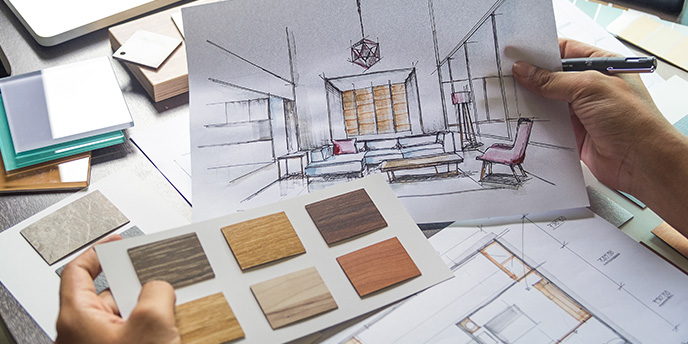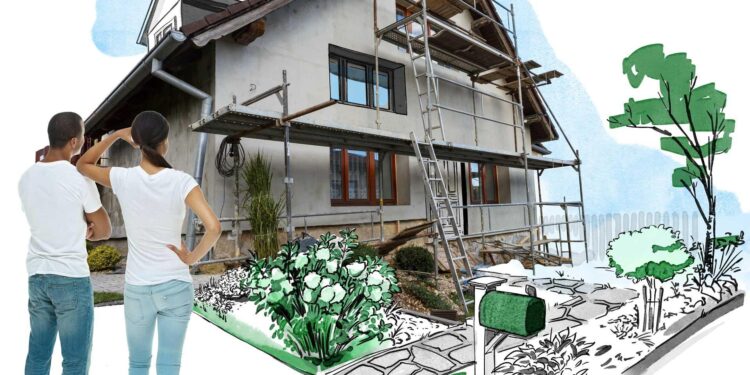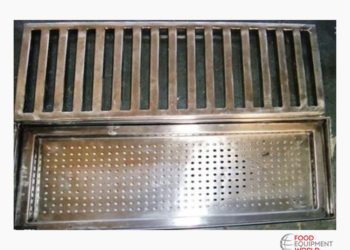In an era where environmental consciousness is at the forefront of global concerns, homeowners are increasingly turning to green home renovation solutions to reduce their carbon footprint and contribute to a sustainable future. Green renovation goes beyond just updating aesthetics; it encompasses environmentally friendly materials, energy-efficient systems, and sustainable practices aimed at minimizing waste and maximizing efficiency. In this article, we’ll explore various eco-friendly solutions for renovating your home, helping you create a more sustainable living space that benefits both you and the planet. Explore the latest landscaping trends as part of your green home renovation, integrating eco-friendly solutions for a sustainable future
Energy-Efficient Heating and Cooling Systems
One of the most significant contributors to a home’s energy consumption is its heating and cooling systems. When renovating, consider upgrading to energy-efficient options such as heat pumps, solar panels, or geothermal heating systems. These solutions not only reduce your carbon footprint but also lower your energy bills in the long run, making them a win-win for both your wallet and the environment.

Sustainable Building Materials
Choosing sustainable building materials is essential for green home renovation. Opt for materials that are renewable, recycled, or locally sourced whenever possible. For example, bamboo flooring is a popular eco-friendly alternative to traditional hardwood floors due to its rapid renewability. Similarly, recycled glass countertops and reclaimed wood can add character to your space while minimizing environmental impact.
Water-Saving Fixtures for Home Renovation
Conserving water is another crucial aspect of green home renovation. Install low-flow toilets, faucets, and showerheads to reduce water usage without sacrificing performance. Additionally, consider incorporating rainwater harvesting systems or greywater recycling systems to collect and reuse water for irrigation or non-potable purposes, further reducing your reliance on municipal water sources.
Energy-Efficient Lighting
Switching to energy-efficient lighting options such as LED bulbs or compact fluorescent lamps (CFLs) can significantly reduce electricity consumption in your home. These lighting solutions consume less energy and last longer than traditional incandescent bulbs, resulting in lower utility bills and fewer resources wasted on replacements. Additionally, installing motion sensors or smart lighting systems can further optimize energy usage by automatically adjusting lighting levels based on occupancy and natural light levels.
Proper Insulation and Air Sealing
Improving insulation and air sealing is essential for maintaining comfortable indoor temperatures while reducing energy waste. During renovation, inspect and upgrade insulation in walls, floors, and attics to minimize heat loss in winter and heat gain in summer. Additionally, seal gaps and cracks around windows, doors, and ductwork to prevent air leakage, improving overall energy efficiency and indoor comfort.
Eco-Friendly Paints and Finishes
Traditional paints and finishes contain volatile organic compounds (VOCs) that can release harmful chemicals into the air, contributing to indoor air pollution and posing health risks. When renovating, opt for low-VOC or zero-VOC paints and finishes that are environmentally friendly and safer for both occupants and the planet. These products emit fewer harmful chemicals and odors, creating a healthier indoor environment for your family.
Sustainable Landscaping
Don’t forget about the exterior of your home when considering green renovation solutions. Sustainable landscaping practices such as xeriscaping, native plantings, and rain gardens can help conserve water, promote biodiversity, and reduce maintenance requirements. Additionally, incorporating permeable paving materials and rainwater harvesting techniques can mitigate stormwater runoff and prevent soil erosion, further enhancing the sustainability of your outdoor space.
Conclusion
Green home renovation offers an opportunity to reduce environmental impact, increase energy efficiency, and create a healthier living environment for homeowners. By incorporating eco-friendly solutions such as energy-efficient systems, sustainable materials, water-saving fixtures, and proper insulation, you can transform your home into a more sustainable space that benefits both you and the planet. Whether you’re embarking on a major renovation project or making small upgrades, every eco-friendly choice contributes to a greener, more sustainable future for generations to come.








Comments 1